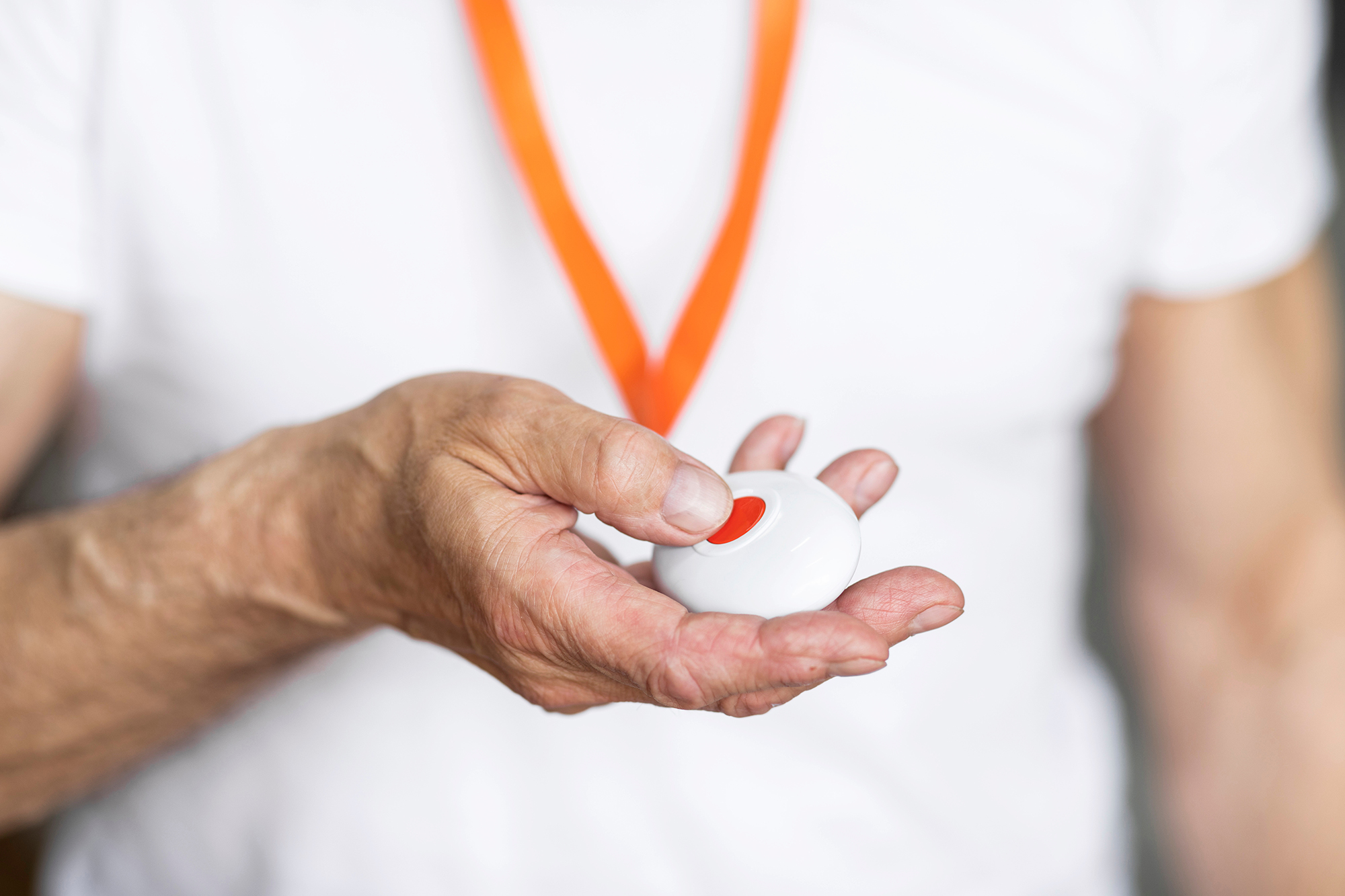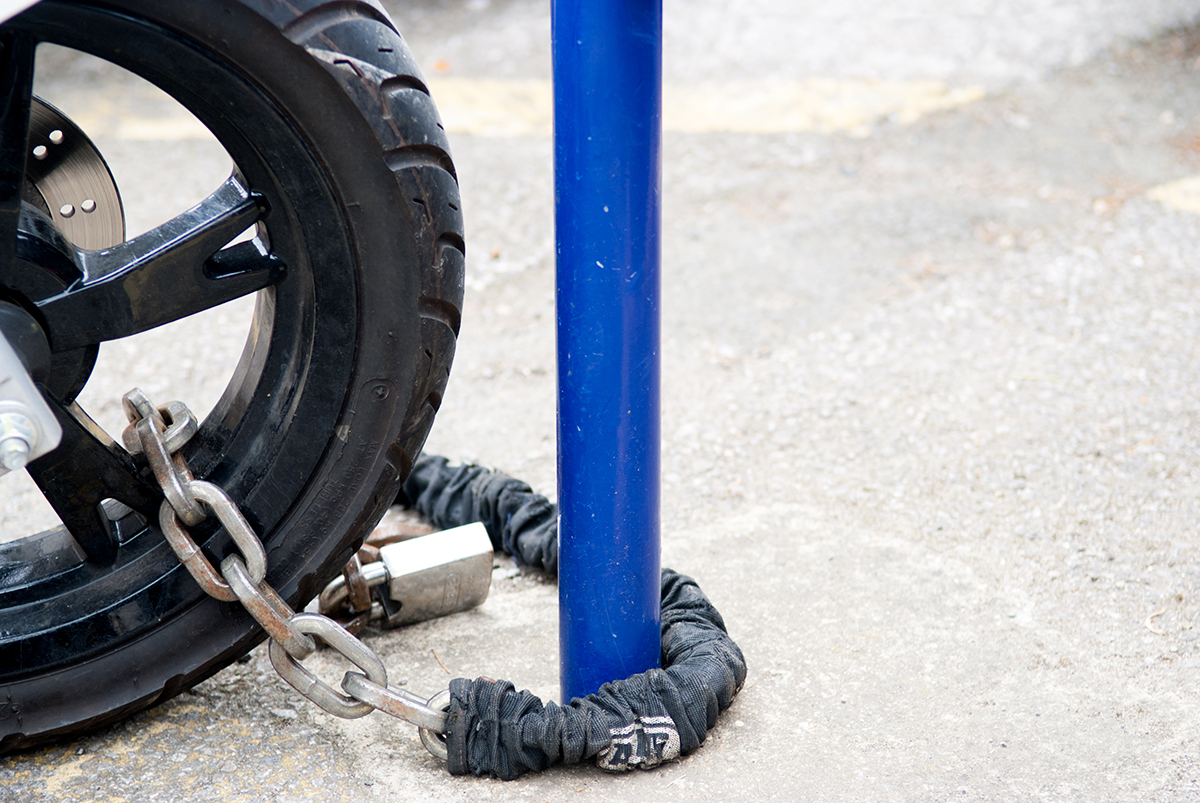Automatic fall detection can be a life-saving tool for your elderly loved one. Here’s everything you need to know
Falls are the single biggest threat to seniors’ safety and personal freedom.
If they’re not fatal, which is often the case, they can lead to broken bones, psychological distress, and other injuries that can severely impact a person’s quality of life. Not to mention the financial toll that treating a fall can have on families.
Luckily, however, with the help of technology, you can empower your loved one to stay active, social, and independent thanks to automatic fall detection for seniors.
How Do Fall Detection Devices Work?
Fall detection devices are equipped with technology that senses the user’s movement, and they come in the form of wearable gadgets or home camera sensors.
Wearable Fall Detection for Seniors
Typically worn around the neck, waist, or wrist, these devices use built-in accelerometers (and sometimes gyroscopes) to watch out for sudden changes in the wearer’s movement.
They also come equipped with a panic button the user can press if they’ve fallen, which connects them with emergency services and allows them to speak to an operator through the device.
If it detects a fall but the user doesn’t press the button within a reasonable amount of time, it will automatically contact 9-1-1, a company monitoring center, emergency contacts, or all of the above.
The best part about wearable fall detection for seniors is that it can give them the freedom and peace of mind to venture outside the home. Certain wearable pendants come with built-in GPS, which will send coordinates to call responders at a dispatch center if they fall while out and about.
Home Camera Sensors
Also known as ambient sensors, these fall detection devices include cameras with built-in motion sensors (and sometimes AI technology) that analyze user movement.
If a home sensor detects a fall, it will automatically contact a monitoring center. An operator will then check in with the victim and, if necessary, dispatch first responders and notify emergency contacts.
Some camera sensors, like Kami’s Fall Detect system, will connect the victim with an emergency contact first, who can dial 9-1-1 if the situation calls for it.
Home fall detection for seniors is a great hands-off approach. With these devices, your loved one won’t have to worry about putting on a pendant or wrist strap, which can be easy to forget.
Smart Watch Fall Detection for Seniors
The dawn of smart devices has opened the door to countless conveniences, including on-the-go fall detection for seniors.
If your loved one has an Apple Watch, a Galaxy Smart Watch, or a Google Pixel Watch, they can call for help in seconds, right from their wrist.
Apple Watch
The SE, Series 4 (or later), and Ultra (or later) models all feature fall detection for seniors.
When your loved one’s Apple Watch detects a fall, it will allow them to call emergency services using one of Apple’s famous sliders.
If they don’t interact with the slider, their Watch will vibrate against their wrist and play an alert that gets increasingly louder over the next thirty seconds. If, after thirty seconds, they haven’t touched the screen and the Watch senses that they’re still immobile, it will automatically call 9-1-1.
Once an operator picks up, it will play a recorded message notifying them of the fall and providing your loved one’s location via GPS coordinates.
Samsung Galaxy Smart Watch
If you want a Samsung Watch with fall detection for seniors, you’ll have to go with the Galaxy Watch Active2, Galaxy Watch 3 through 5, or any Wear OS model.
Samsung smart watches work a bit differently than Apple’s.
When they sense a fall, they still vibrate and allow the user to dismiss the alert or call for help. But if your loved one stays still for over fifteen seconds, instead of calling 9-1-1, the device will automatically notify their listed emergency contacts.
Then, it’s up to you to reach out to them and decide whether to call for emergency assistance.
Google Pixel Watch
Fall detection for seniors just came to the Google Pixel Watch mid-last year, and it works almost identically to the Apple Watch.
After a fall, the Pixel Watch will wait for thirty seconds. If your loved one hasn’t moved in that time, it’ll vibrate, play an audible alert, and display a screen with two buttons. One that says “I fell & need help” and another that says “I’m OK.”
It will then wait another minute for any movement or interaction. If there’s none, it will automatically notify the authorities and give them your loved one’s location information.
A Priceless Investment in Their Safety & Quality of Life
The stats we shared at the beginning of this article don’t just apply to high-risk seniors. They apply to all adults 65 and older.
Fall detection for seniors is a critical tool that should be in every caregiver’s playbook. It can not only save lives, but also make a big difference in your loved one’s social life, mental health, and overall well-being.
We hope this guide helps you choose which option is right for you and your family!





